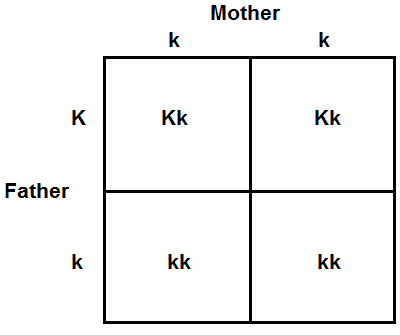
If a female is heterozygous for an X-linked dominant allele, 1/2 of her sons and 1/2 of her daughters will have the disorder. If a female is homozygous for an X-linked dominant allele, all her sons and daughters will have the disorder. Females with an X-linked dominant disorder can be either homozygous or heterozygous. If the male parent has the X-linked disorder, he would pass on the disease-associated allele to all his daughters: all his daughters would be carriers, but none of his sons would carry the disease-associated allele.įinally, let’s discuss how X-linked dominant disorders can be identified in pedigrees. If the female parent has the disorder (i.e., she is homozygous), all her sons would have the disorder and all her daughters would be carriers. If the female parent is a carrier (i.e., she is heterozygous), 1/2 of her sons would have the disorder and 1/2 of her daughters would be carriers. X-linked recessive disorders are much more common among men than women. Therefore, males with an X-linked recessive disorder always inherit the disease-associated allele from their mother. Males are hemizygous for the X chromosome (i.e., they have a single X chromosome, which always comes from their mother). Females with an X-linked recessive disorder must inherit the disease-associated allele from both parents. Let’s move on to X-linked recessive disorders. Autosomal dominant disorders often occur in every generation. If one parent is homozygous for the disease-associated allele, all their offspring will have the disorder. If one parent is heterozygous for the disease-associated allele, 50% of their offspring will have the disorder. Individuals that manifest an autosomal dominant disorder can be either heterozygous or homozygous for the disease-associated allele. In the case of autosomal dominant disorders, males and females will also be equally affected. Autosomal recessive disorders most often skip generations or occur sporadically. If the autosomal recessive disorder is very rare, it is more likely to be the result of a consanguineous mating. When both parents are carriers, 1/4 of their offspring will have the disorder and 3/4 of their offspring will be unaffected 2/3 of the unaffected offspring will be carriers. Autosomal recessive disorders often occur among siblings of two unaffected parents who are both carriers.

Individuals that manifest an autosomal recessive disorder must be homozygous for the disease-associated allele. Autosomal recessive disorders affect males and females equally. Let’s start with autosomal recessive disorders.


Hi Prosanta, This is a great question! Pedigree charts can provide valuable information for determining the inheritance patterns of human disorders.


 0 kommentar(er)
0 kommentar(er)
